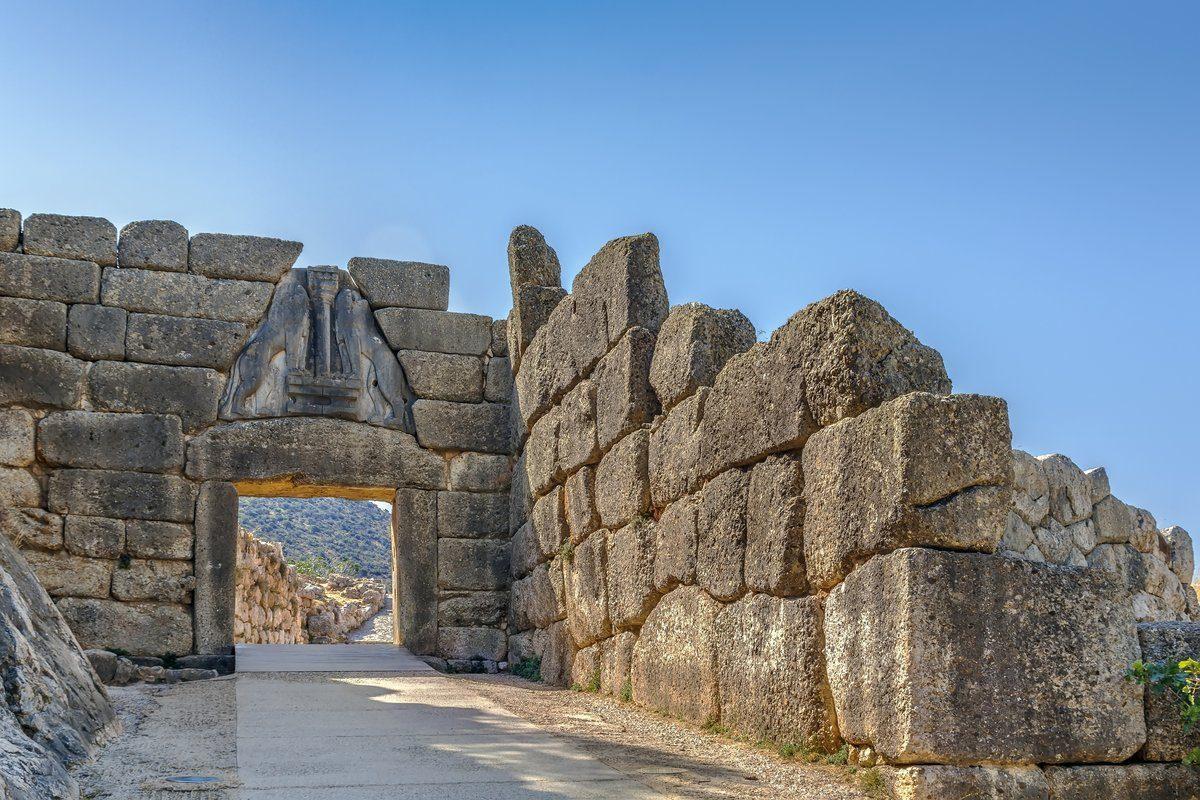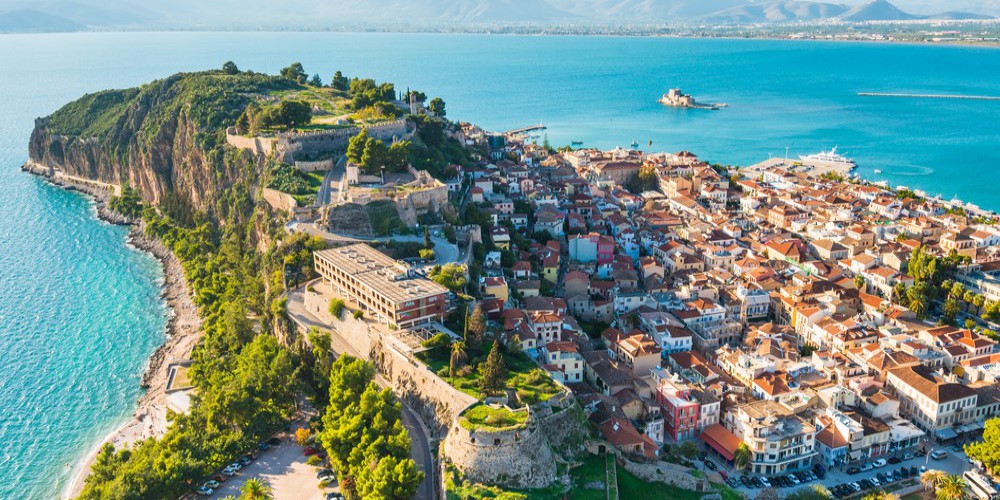
Mani Peninsula Travel Guide
Key Takeaways
- Mani is characterized by its rugged and rocky landscape, with mountains, cliffs, and deep gorges.
- One of the most iconic features of Mani is its tower houses. These tall stone structures served as defensive fortifications for the clans and families of Mani during the Byzantine and Ottoman eras.
- Maniots are known for their bravery, resilience, and fiercely independent spirit, which is reflected in their architecture, music, and lifestyle.
- The Diros Caves, located in Mani, are a popular tourist attraction known for their beautiful stalactite and stalagmite formations.
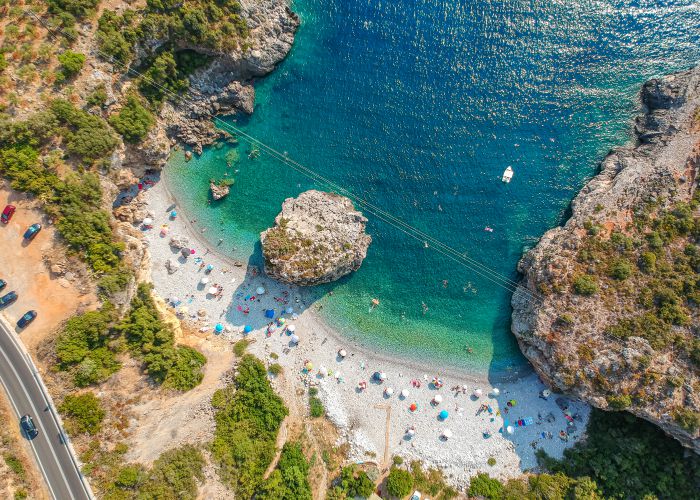 Foneas Beach, Kardamylli, Mani - credits: Pit_Stock/Shutterstock.com
Foneas Beach, Kardamylli, Mani - credits: Pit_Stock/Shutterstock.com
Mani Peninsula is a region of Greece that covers the peninsula of southern Peloponnese. Despite the inhospitable landscape of barren rocks and cliffs that dive into the deep sea, this region is one of the most authentic and traditional places a visitor can experience in Greece.
Follow us on this trip to Mani, meet its charming wild beauty and history, and taste Greece like a local in a way only our Greece vacation packages allow!
The History of the Mani Peninsula in Mainland Greece
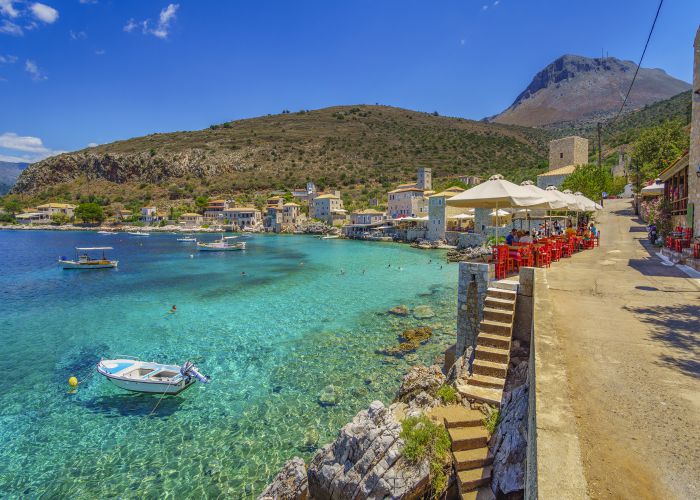 Limeni, Mani - credits: Pit_Stock/Shutterstock.com
Limeni, Mani - credits: Pit_Stock/Shutterstock.com
The region of Mani stretches from the mountain range of Taygetus to the southernmost point of mainland Europe, Cape Tenaro.
Situated between the Laconian and Messenian Gulfs in southern Peloponnese, Mani is a landscape that combines an inhospitable terrain of mountainous regions of arid, rocky land with cliffs and gorges and beautiful seaside areas with cool refreshing turquoise waters able to satisfy the taste of every traveler.
The most valuable asset of the region, though, is its particular history and its people. Known even today, the Maniots, the residents of Mani, are considered to be harsh and hardy people when they have to, but at the same time, authentic, close to their roots, and extremely hospitable.
Let us introduce you to this relatively unknown part of Greece and have a taste of what Mani has to offer.
Mani’s history stretches back thousands of years, with the first inhabitants being the tribe of Leleges, according to Pausanias. During ancient times, the region was under the control of the Spartans and continued to be so until the Roman era of the Greek region.
Stubbornly resistant to any change, Mani was one of the Greek regions that accepted Christianity as the dominant religion only after the 8th century AD.
During Byzantine times, the area was included in the lands of the Peloponnese. During the last moments of the Empire, it played a key role by being part of the Despotate of the Morea, ruled by the last Byzantine dynasty, the Palaiologans.
After the coming of the Latins during the 13th century, Mani was considered to be a key area to control the seaways of the south Aegean, and, therefore, its conquest was inevitable.
Even then, the Maniots were known as fearless warriors and brutal people with a strong claim to their ancestral lands. It really showed in the 15th century after the decision of the Ottoman Empire to expand westward and include the lands of the Peloponnese.
It is known that the Sultan of the Ottoman Empire, Mehmed II, did not try to conquer the lands of Mani but, instead, with carefully planned delegations, he tried to persuade the Maniots into voluntarily accepting Ottoman rule.
Unfortunately for Mehmed, the Maniots decided to stick with the Latins and fight against the Ottoman troops. Even after the absolute domination of the Ottoman Empire over the Greek region, Mani always had its particular characteristics. It was never totally subdued to their rule and had an autonomous character through the centuries.
The culture and way of life of Mani's locals
 Mesa Mani - credits: Oksana Parafeniuk/Shutterstock.com
Mesa Mani - credits: Oksana Parafeniuk/Shutterstock.com
Because of its autonomous nature, Mani was the land for every refugee and anyone that opposed the given status quo. Life was always orbiting around warfare, and this made an impact on both the region’s architecture and the character of its people.
The strategic location of Mani, along with the constant danger of invasion from pirates and other threats, resulted in a really patriarchal society with its focus on warfare.
The very epicenter of their society is the institution of family (extended family), which ensured the survival of the family’s name and legacy and the development of strong bonds among its members.
Each family had its own tower house used in times of need for protection and as a stronghold during invasions and feuds. After the passing of the centuries, the result was a region full of tower houses practically impossible to be controlled by anyone else but the Maniots.
This is the reason why Mani was one of the incubators of the Greek War of Independence and one of the most trouble-making provinces of the New Greek State.
The Contribution of Mani to the Greek War of Independence
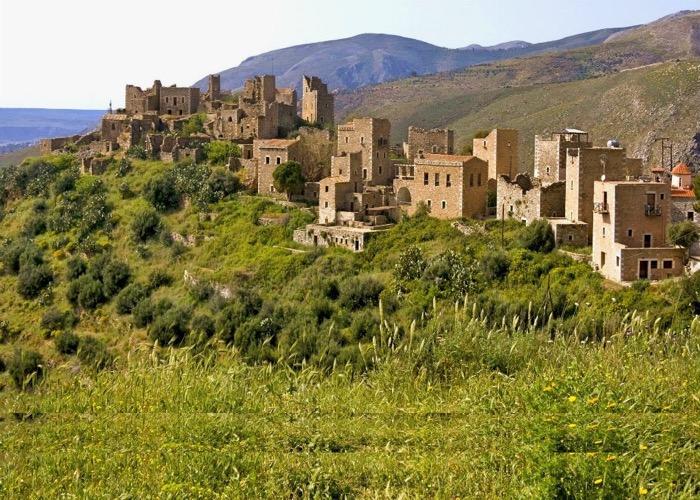
As mentioned before, the autonomous character of Mani came to be one of its greatest assets during the preparations for the Greek War of Independence.
There, any preparations could be conducted with no harassment or setbacks literally right under the nose of the Ottoman rule by the members of Filiki Etaireia.
After the liberation of Greece from the Ottomans and the establishment of the New Greek State, the first governor Ioannis Kapodistrias tried to break these locally established institutions of family-controlled lands and clientelism.
Unfortunately for him, it only resulted in his assassination by members of a prestigious Maniot family, Konstantis and Georgios Mavromichalis, in the city of Nafplion in 1831.
It is not an exaggeration to say that there is some kind of connection between the ancient people of Sparta and contemporary Maniots. These people serve their own code of honor, following a strict tradition and customs, where honesty, patriotism, sacrifice, courage, and filotimo are values not to be disregarded.
Even today, the inhabitants of the region are really proud of the fact that they always lived free under no tyrant or ruler despite the sacrifices they had to endure.
Perhaps another example of their particular ancient ancestry is their custom of laments, funerary poets that pass verbally from generation to generation, which have a striking resemblance in form to the ones described by Homer in his work Iliad.
After having explored the fascinating culture of the Mani peninsula, we will now share with you the locations you definitely have to visit during your trip there!
Get comfortable and set on this mental trip to some of the most iconic places the region of Mani has to offer.
Things to do in the Mani peninsula
Visit the picturesque village of Vatheia and its many tower houses
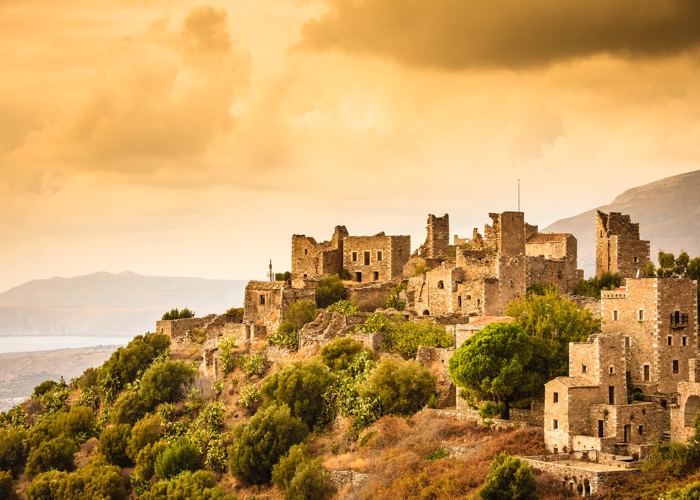
Situated in southeastern Lakonia, Vatheia is a small traditional village that belongs to the municipality of Itylo. Already known since the 16th century, Vatheia is built on top of a hill that supervises the sea passage of Cape Tenaro.
The village is dominated by the typical Maniot tower-houses belonging to different families of the village. Interestingly, a source of the 19th century from a British fellow of the Royal Academy, William Martin Leake, vividly illustrates how life in the village used to be.
During one of his journeys, he decided to pass by the village of Vatheia, only to get ambushed by armed locals. They succeeded in getting away safely, only with the intervention of their guides, who, by being locals as well, came to an understanding with the bandits.
Then, Leake mentions that he was informed that the families of the village had been in a fight for many years resulting in criminal activities and a continuous feud known as a vendetta.
He says that more than 100 men in the area had been killed over the years, and most of the families reside in their tower houses for protection. Even though it is not safe to assume that this was the rule for the whole Mani region, it surely shows the way of life Maniots were used to.
Nowadays, the small village with circular towers has less than 30 residents in total, but it is well-protected for its astonishing architecture as a historical landmark.
While there, do not miss your chance to wander around the pebble-stone alleys and explore the architecture that characterizes the area.
Some of the tower houses of the village have been restored, which gives you a nice picture of the form and function of those structures that beautify southern Greece.
Head to Kardamili on the west coast of the Mani peninsula
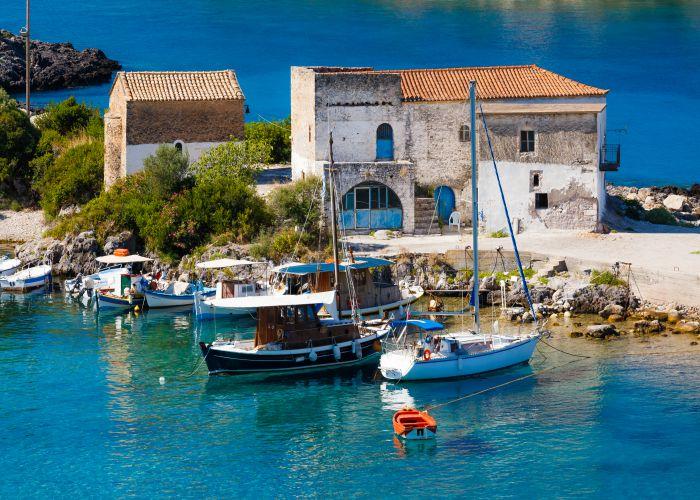
Kardamili is a traditional settlement that belongs to the part of Mani that belongs to Messene in southern Greece. Up to the northern region of Mani, Kardamili is built close to the seaside on the rocky coast of the Messenian Gulf.
In past years, the village was known as the town of Kardamili and was quite an important urban center of the region. The history of the town goes back to ancient times but especially during the 18th and 19th centuries; the town really experienced its peak.
There, you can visit the historical Tower of Mourtzinos, a structure of the 17th century that finely outlines local architecture.
It used to be a complex that operated at the same time as a defensive fortified sanctuary, a luxurious house, and a productive center of local goods.
In 1967, the inheritors of the tower decided to cede it to the State under the condition of converting it into a museum. Today, the visitor can easily explore the history and tradition of Mani in this fully restored mansion and well-equipped and informative museum.
Except for the Tower of Mourtzinos, the traveler that finds himself in Kardamili can admire the numerous Byzantine and post-byzantine churches to be found nearby, such as the one of St. Theodoroi and St. Spyridon with its imposing symbol of the Byzantine Empire placed above its entrance.
Do not miss the chance, though, to explore the numerous coves around the area and discover pristine beaches with serene turquoise waters and relax by enjoying a mesmerizing sunset.
Explore the Caves of Diros
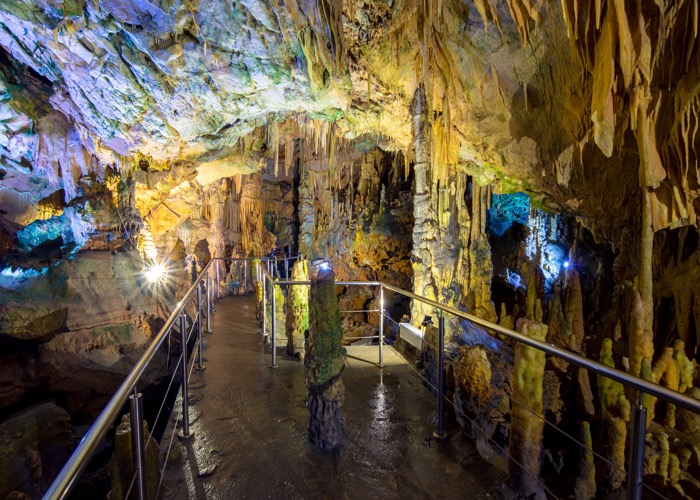
Located close to the city of Areopolis, the cave system of Diros is one of the natural landmarks known throughout the world you should not miss. With its entrance close to the seaside, the inhabitants were not unaware of its existence, and people used to refer to them as the ''fox’s lair''.
In 1949, the Speleological Organisation of Greece decided to explore this cave system, only to discover and get amazed by its sheer size. Today it is known that the caves stretch for more than 15km underground and have a maximum depth (known so far) of 100 meters!
It surely is one of the most impressive natural landmarks that someone can visit in Greece and in Europe in general.
Parts of the caves are flooded, offering different types of habitats to many cave species and an amazing experience for the visitor.
Research on the caves showed a plethora of mammal species from prehistory until now (panthers, hyenas, lions, badgers, deer, etc.), a large collection of the remains of the now-extinct European hippo (Hippopotamus Antiquus), and pottery which indicates the presence of humans in the area since prehistory.
Stroll the seaside town of Gythion
 Gythio - credits: Apostolis_Giontzis/Shutterstock.com
Gythio - credits: Apostolis_Giontzis/Shutterstock.com
Near the mouth of the river Evrotas, in the Laconic Gulf, on the east coast of Mani, built amphitheatrically at the eastern foot of the ancient Larysios Mountain, Gythio is a small port town that will steal your breath.
Against the backdrop of the sea in front and the hill with its old, two-story and three-story neoclassical houses behind, on the waterfront of Gythio, you will be forgotten strolling and tasting flavors in its taverns and ouzo and drinking coffee or a drink in the cafe-bars that stretch along the street.
Heading to the southern edge of the city, you will find a small island, the ancient Kranai or Marathonisi, which joins Gythio and you can easily visit it, where the traditional tower of Tzannetakis Grigorakis, leader of the Revolution, where the Historical Museum operates and is located, with Mani exhibits.
According to Homer, Paris, and Eleni took refuge on this verdant island to live their love shortly before heading to Troy.
At the foot of the hill is the ancient theater that today hosts various cultural events in the area, while north of the city of Gythio, on the hill, are the ruins of the ancient city.
Marvel at the striking region of Areopoli
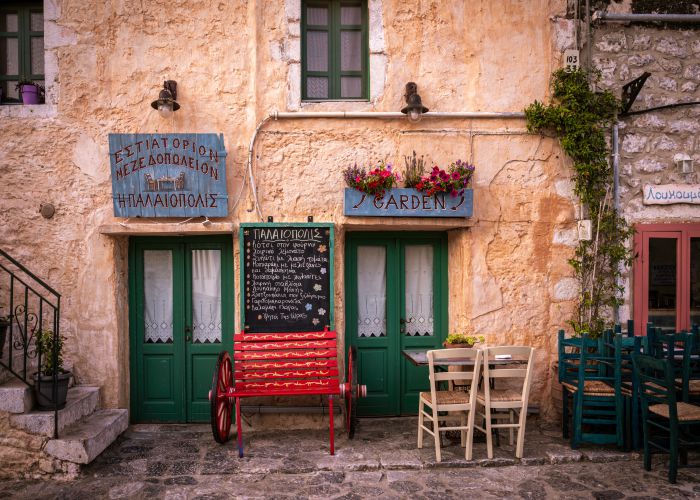 Areopoli - credits: mariephotogrece/Shutterstock.com
Areopoli - credits: mariephotogrece/Shutterstock.com
Upon leaving Gythio, continue to explore the stunning Inner Mani countryside until you reach the stunning Areopoli, the unofficial capital of the Mani region in mainland Greece.
There is no one who walked at least once in Areopolis, the lord of Mani, and was not enchanted!
Areopolis is a historic settlement that maintained its independence during the Turkish occupation. It is the seat of the Municipality of Itilo and is considered a protected settlement, keeping the tradition of Mani alive.
Areopolis is built on a plateau above its natural and spacious port, the so-called Limeni. Its area produces fine olive oils from its luscious olive groves, a few grains, and considerable livestock.
Reach Cape Tenaro
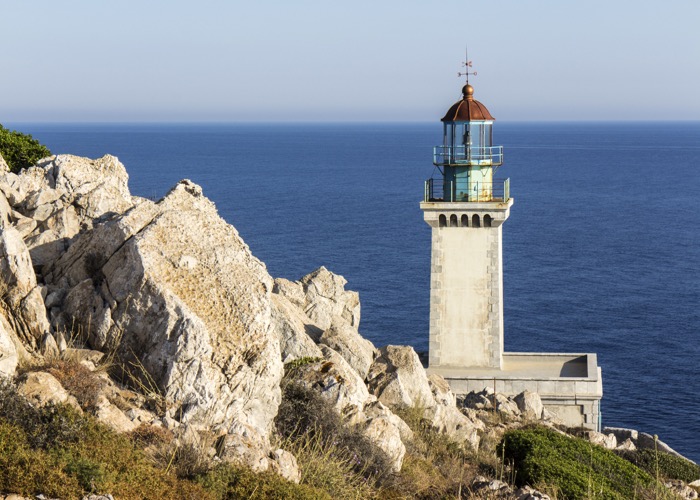
Cape Tenaro (aka Cape Matapan) is the southernmost point of Mani and that of mainland Europe as well. The remoteness of the location and the expanse of the sea stretching up to the shores of Libya made this place sacred since the time of the ancient Greeks.
In antiquity, people used to believe that this was the location of one of the entrances to the Underworld.
Many myths include this location in their narratives, such as the one of Hercules and Cerberus or the one of Orpheus and Eurydice.
To add to this picture, an existing cave in the area was quickly perceived by people as the entrance to the kingdom of Hades, and many temples honoring him, among other gods, were erected there.
The ruins of the temple of Poseidon, still visible today, stand as proof of history. After the domination of Christianity, the temple was converted into a church, and quickly the ancient festivals and rituals became part of the new Christian narrative.
In the open sea, just some kilometers away from Cape Tenaro, many contemporary battles happened as well, such as the Battle of Cape Matapan in WWII between the Italian and British navies.
Walk along the Viros Gorge in Outer Mani
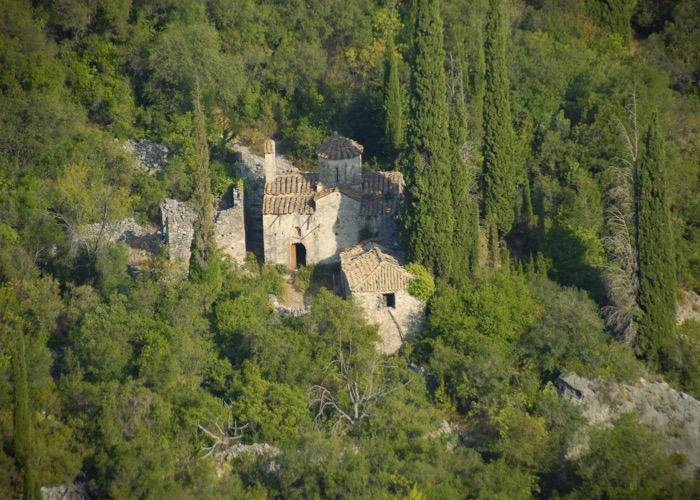
Carved by the flow of a river springing up on the mountain of Profitis Ilias, the Viros Gorge ends at the sea close to the town of Kardamili in Outer Mani.
Historically, this gorge was used to connect the ancient city of Sparta to its port of Kardamili at the Messenian Gulf.
If you decide to set on a trekking experience across the Viros Gorge, keep in mind that you have to cover 11 strenuous kilometers and reach the maximum altitude of 600 meters.
To cross, you will need at least 4 hours, but before doing that, make sure you are well-equipped with water and a reliable map or guide.
On your way, you will have the chance to see the Messenian nature at its finest, with ancient olive trees, tall cypresses, and shady pine trees.
Do not miss the chance to make short stops at the numerous churches and some abandoned monasteries built in the gorge.
Keep in mind that despite the fact that today the region seems remote, it used to be the most popular connection between Messene and Lakonia for many centuries.
Use Mystras as a time machine

Mystras is a medieval fortified city just 8km away from the modern city of Sparta. It was founded in 1249 after the decision of William the II of Villehardouin.
The Latin rule of the area lasted up until 1259 when in a battle against the Byzantine Empire, he was captured by the enemy and had to give this castle, among others, in return for his freedom.
From then on, Mystras came to be a cultural, political, and military center of great importance for the weak, shrinking Byzantine Empire.
The first lords of the castle were the members of the Kantakouzenos family, and Mystras, along with the rest of the nearby castles and lands, came to be the Despotate of the Morea.
In the 14th century, the relationship between the capital of the Empire, Constantinople, and the Despotate became even closer. The Emperor decided to keep the Despotate in the dynasty and appointed his son as its ruler.
The last era of Byzantine splendor in culture and arts took place behind the high walls of Mystras. Even Konstantinos Palaiologos, the last emperor of the Byzantine Empire, was crowned in the Cathedral of St. Demetrius in this city.
After the domination of the Ottoman Empire over the Byzantine one, Mystras continued to be an important center in the Peloponnese.
As a multicultural city with substantial populations of Ottomans, Jews, Greeks, and Latins, in the 18th century, Mystras had more than 18,000 people. Actually, it was considered to be the second most important city of Morea (Peloponnese) after the city of Tripoli.
Mystras was actively involved in the Greek War of Independence, and in 1825, the Egyptian troops of Ibrahim scorched the city to the ground.
After the establishment of the New Greek State and the newly-founded city of Sparta, Mystras gradually got abandoned, with its last inhabitants leaving the city in 1952.
Today, the area of the city, the many Byzantine churches, and the castle of Mystras belong to the network of Greek archaeological sites.
A site of great importance regarding Greek history -more than many in major Greek cities- located in a magical area on the foothills of the Taygetos mountain range, it is certainly a must-visit site during your trip to Mani.
Final Thoughts
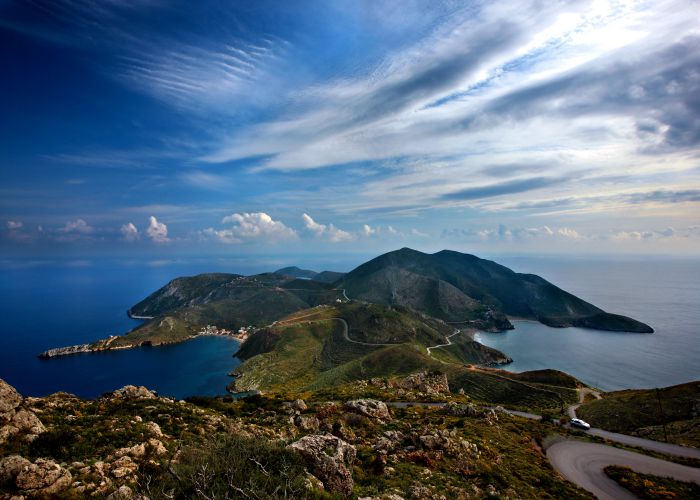 Cape Tainaro - credits: Heracles_Kritikos/Shutterstock.com
Cape Tainaro - credits: Heracles_Kritikos/Shutterstock.com
From deep gorges to forgotten castle cities of fallen Despotates, Mani can surely satisfy the taste of the most demanding traveler.
Do not waste more time, plan your own trip to this adventurous corner of Greece and check out the rest of our Greece tours.





